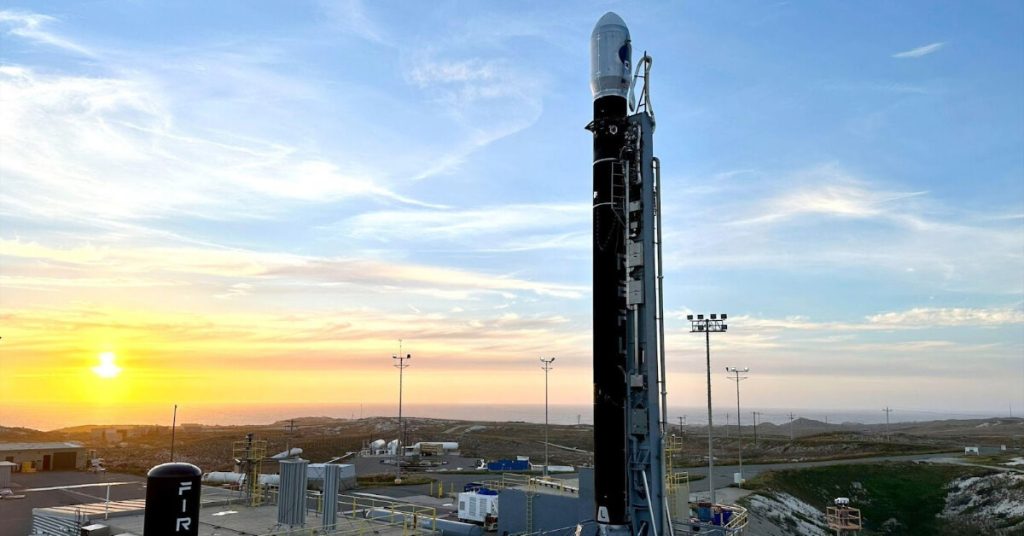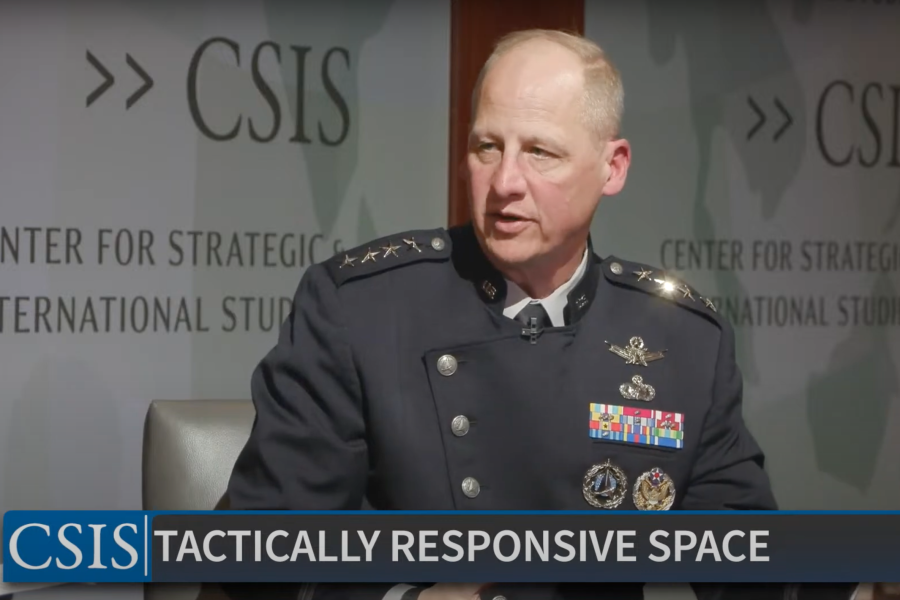When the Space Force shattered its own records by blasting a satellite into orbit 27 hours after getting launch order, Chief of Space Operations Gen. B. Chance Saltzman likened it to Chuck Yeager breaking the sound barrier.
Now comes the hard part: Turning December’s “Victus Nox” mission into something routine, and maybe even slow. As the Space Force delves into “tactically responsive space,” or TacRS, new Vice Chief of Space Operations Gen. Michael A. Guetlein says timelines will get shorter still.
“A tactically relevant timeline is a matter of weeks, days, even hours,” Guetlein said said Jan. 19 at the Center for Strategic and International Studies. “And if you look at the near-peer competitors that we’re looking at today, the fight could be over in a matter of months, if not weeks. So we no longer have the luxury of time to wait years, even 10 to 15 years, to deliver some of these capabilities.”
Guetlein said the problem is the entire force is still optimized around that plodding business model. So turning tactically responsive space into not just a one-off challenge, but a whole new modus operandi is the new challenge. USSF leadership is now “refocusing the force on the way we do acquisitions, the way we do operations, the way we do presentation of forces, to make sure that I can be tactically relevant to the joint fight.”
He wants the Space Force to embrace a “MacGyver-type mindset,” Guetlein said, referring to the revered 1980s TV character known for his inventive use of the resources at hand. That means not just faster launches, but creative, aggressive, and creative ways of utilizing capabilities on orbit and identifying commercial solutions that can meet military requirments.
“How do I take advantage of what I have, which is exploit what we have, or how can I buy what I can, to get as much capability on orbit as I possibly can to support our warfighters our national decision makers and our allies?” Guetlein asked.
TacRS builds on Guetlein’s mantra at Space Systems Command, where he exhorted his largely civilian team of experts to “exploit what we have, buy what we can, and build what we have to.”
Accelerating processes to be tactically relevant means breaking through the conventional red tape and bureaucracy in defense acquisition, which has proven especially difficult for space, where the high cost and high stakes of each launch drove ever more stringent requirements.
Military space leaders have been trying to go faster for years. Back in 2005, the Army War College Quarterly published “Operationally Responsive Space: A New Defense Business Model,” co-authored by future CSO John W. Raymond, at the time an Air Force Colonel.
Now that concept is finally attainable, Guetlein said. The lower cost of launch, advances in technology, and the commercialization of space have all reduced risk and the growing threats of near-peer adversaries have increased urgency and, to some degree, risk tolerance.
That doesn’t mean the Space Force wants to build and launch every satellite at breakneck pace. It’s not necessary all the time, but it is for certain missions and capabilities, Guetlein said.
“If a near peer competitor makes a movement, we need to have it in our quiver to make a counter maneuver, whether that be go up and do a show of force, or go up and do space domain awareness or characterization of the environment, what’s going on, etc.,” Guetlein said. “If … we have a natural disaster, a tornado hits one of our states, and we need emergency SATCOM, we need the ability to put up satellite communications in a matter of hours to support our national decision authorities to get eyes on the ground.”
In such a scenario, launch speed will be key, and Victus Nox demonstrated the processes and procedures the Space Force must address to get faster.

Both Guetlein and industry executives speaking on a panel discussion afterward were quick to note that Victus Nox could have launched in less than 27 hours were it not for having to wait for the Earth to rotate into position so the satellite could be place in its intended orbit.
But in a future fight, tactical relevance could mean acting within minutes or jsut a few hours, not a day. And in such cases, the Space Force must be ready to exploit any and everything at is disposal.
“We are doing that through partnerships—partnerships with industry, partnerships with international [allies],” said Guetlein. “We’re doing that through commercial exploitation. We are doing that through alternative sourcing, and then we’re also doing it through the tactically responsive space culture change across the entire force. So when I think about it from a MacGyver kind of perspective, which just means, how do I throw everything at it, plus the kitchen sink, to guarantee that capability? That’s how we’re going to get that down to minutes.”
